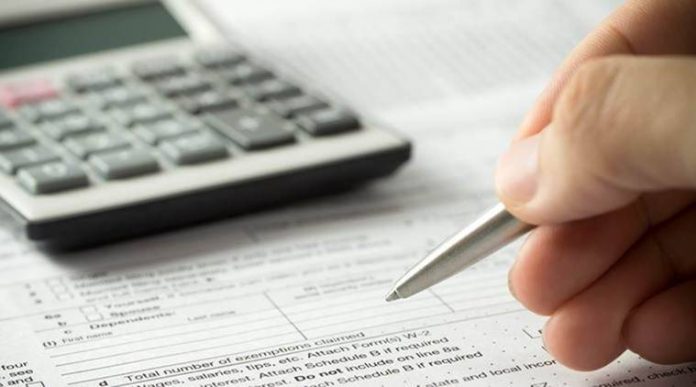This article is written by Anil Kumar, pursuing a Certificate Course in Advanced Corporate Taxation from LawSikho.
Table of Contents
Introduction
There are two types of taxes in India:
- Direct tax
- Indirect tax
If we talk about direct tax, it is levied on the income that different types of business entities earn in a financial year. In India there are different types of taxpayer registered with the income tax department and they pay tax at different rates, for example individual pay tax at slab rate and company pay tax at flat rate.
Subdivision of income tax:
Income tax: this tax is paid by the taxpayer which is not a company (not registered under company law) at a slab rate.
Corporate tax: corporate tax is paid by the company (registered under company law) at flat rate.
Definitions
Company: Section 2(17) of the income tax Act, stipulate that company means:
- An Indian company;
- Body corporate incorporated outside India under the law of a foreign country;
- Any institution, association or body whether incorporated or not and whether Indian or non-Indian, which is declared by general or special order of the board to be a company.
Domestic company: Section 2(22A) of the Income Tax Act stipulate that domestic company means:
- An Indian company;
- Any other company which is liable to pay tax under Income Tax Act, has made the prescribed arrangement for the declaration and payment, within India of the dividends ( including dividends on preference share) payable out of such income.
Foreign company: as per section 2(23A) of the Income Tax Act, foreign company means a company which is not a domestic company.
Residential status of company
|
Section |
Company |
Residential status |
|
6(3)(i) |
Indian company |
Always resident in India. |
|
6(3)(ii) |
A foreign company (whose turnover/ gross receipt in the previous year is more than 50crore) |
It will be resident in India if its place of effective management(POEM) during the relevant previous year as in India. |
|
6(3)(iii) |
A foreign company (whose turnover/ gross receipt in the previous year is 50crore or less) |
Always non- resident in India. |
|
Types of income |
Resident |
Non-resident |
|
Income arising in India |
Taxable in India |
Taxable in India |
|
Income arising outside India |
Taxable in India |
Not taxable in India |
Place of effective management (POEM)
Clause (ii) of section 6(3) (i.e. a company other than an Indian company shall be resident in India in any previous year its place of effective management in that year is in India) shall not apply to a company having turnover or gross receipt of rupees 50crore or less in a financial year therefore, the guidelines for determining POEM as given in circular dated 24.01.2017 shall apply to a company having turnover or gross receipt exceeding rupees 50crores in that financial year.
POEM is deemed to be outside India if:
- Active business outside India; and
- More than 50% board meetings conducted outside India.
If above both the conditions are satisfied then POEM shall be deemed to be outside India
Note:
A company shall be said to be engaged in “Active business outside India” if the following four conditions are satisfied:
- Passive income is not more than 50% of its total income; and
- Less than 50% of its total assets are situated in India; and
- Less than 50% of total number of employees are situated in India or resident in India; and
- Total payroll expenditure incurred on such an employee is less than 50% of its payroll expenditure.
The average of data of the previous year and two preceding years shall be taken where the company is in existence for a shorter period, then data for a shorter period is to be considered.
Passive income aggregate of:
- Income from the transaction where both the purchase and sale of goods is from/to its associate enterprise.
- Income by way of royalty, dividend, capital gain, interest, or rental income.
Tax rates in case of company
|
Particulars |
A/Y 21-22 |
Income between 1 crore to 10 crore |
Above 10 crore |
Cess (after surcharge and marginal relief) |
||
|
If turnover/gross receipt during p/y 2016-2017 up to 250 crore. |
25% |
7% |
12% |
4% |
||
|
If turnover/gross receipt during p/y 2017-2018 does not exceed 400 crore amended Finance Act 2019 |
25% |
7% |
12% |
4% |
||
|
If turnover/gross receipt in the p/y 2017-18 is more than 400 crore. |
30% |
7% |
12% |
4% |
||
|
Foreign company |
40% |
2% |
5% |
4% |
||
Special rates of income tax
|
Section |
Nature of income |
Rate of tax |
|
111A |
Short term capital gains from transfer of securities on which securities transaction tax has been charged. |
15% |
|
112 |
Long term capital gain |
20%/10% |
|
112A |
On long term capital gain (listed share/unit) |
exempt up to INR 1 lakh excess taxable @10% |
|
115BB |
Casual income |
30% |
|
115BBE |
Unexplained amounts are treated as income under section 68, 69, 69A, 69B, 69C and 69D of the Act. |
60% |
Minimum Alternate Tax section 115JB
Objective of levying MAT
A taxpayer, being a company, may have generated income during the year but by taking the advantage of various provisions of income tax law (like exemptions, deductions, depreciation etc.), it may have reduced its tax liability or may not have paid any tax. Due to the increase in such zero tax paying companies MAT was introduced by the Finance Act, 1987.
The objective of introducing MAT is to bring zero tax companies into the tax net which despite having earned substantial book profits and paid handsome dividends do not pay any tax due to various tax concessions and incentives provided under the income tax law.
Applicability of MAT
Applicable to all companies including foreign company except the following three cases:
- The assessee is a resident of a country or a specified territory with which India has DTAA under section 90/90A and the assessee does not have permanent establishment in India (PE).
- The assessee is a resident of a country with which India does not have DTAA and the assessee is not required to register under any law.
- If foreign company avails the benefit of section 44B/44Bb/44BBA/44BBB then such foreign company shall not be liable to pay MAT.
Tax payable to government
In case of domestic company, income tax payable shall be higher of the following:
- Tax on total income computed as per the normal provisions of the income tax Act by changing special rates and normal rates applicable as increased by:
- Surcharge of 7% where total income exceeds INR 1 crore minus marginal relief plus health and education cess@4%.
- Surcharge of 12% where total income exceeds INR 10 crore minus marginal relief plus health and education cess@4%.
- 15% of book profit as increased by:
- 7% surcharge where book profits exceeds INR1 crore minus marginal relief plus health and education cess@4%.
- Surcharge of 12% where book profits exceeds INR10 crore minus marginal relief plus health and education cess@4%.
In case of foreign company, the income tax payable shall be higher of the following:
(i) Tax on total income computed as per the normal provision of the income tax Act as increased by:
- Surcharge of 2% where total income exceeds INR 1 crore minus marginal relief plus health and education cess@4%.
- Surcharge of 5% where total income exceeds INR 10 crore minus marginal relief plus health and education cess@4%.
(ii) 15% of the book profits as increased by:
- Surcharge of 2% where book profits exceed INR 1 crore minus marginal relief plus health and education cess@4%.
- Surcharge of 5% where book profits exceeds INR 10 crore minus marginal relief plus health and education cess@4%.
MAT credit
|
If MAT is less than normal tax. |
No MAT credit is available. |
|
If MAT is equal to normal tax. |
No MAT credit is available. |
|
If MAT is more than normal tax. |
MAT credit is available. |
Note: MAT credit can be carried forward for the next 15 assessment years, after 15 years if there is any balance of MAT credit then it will become a dead loss (no treatment).
Computation of book profit for MAT
Net profit as per profit and loss account (i.e. Companies Act, 2013.) xxxx
Add:
- Income tax
- Provisions of income tax
- Interest under income tax
- Surcharge/cess
- CDT/DDT
- Transfer to reserve
- Proposed dividend / final dividend
- Loss of subsidiary company
- Provision for unascertained liability
- Deferred tax
- Expenditure related to section 10/11/12
- Expenditure related to section 86
- Expenditure related to 112A,111A,115A but only in case of foreign companies.
- Expenditure related to section 115BBF
- Notional loss under section 47
- Depreciation
- Provision for diminution of value assets
- Amount standing in revaluation reserve
- Amount of gain transfer of unit under section 47
Less:
- Amount withdrawn from any reserve
- Income exempt under section 10/11/12
- Depreciation except revaluation
- Amount withdrawn from revaluation reserve to the extent of depreciation
- Income exempt under section 86
- Income taxable under section 112A,111A,115A,in case of foreign company
- Notional profit under section 47
- Income from royalty under section 115BBF
- Brought forward loss and unabsorbed depreciation sick company
- Brought forward loss or unabsorbed depreciation whichever is less
- Profit of sick company
- Deferred tax
Book profit XXXX
Assessment of company
|
RETURN OF INCOME |
The principal officer of the company is required to file a return of total income of the company on or before 31st October of the assessment year. |
|
RATE OF TAX |
|
How to compute marginal relief
Step 1: Computation of tax liability on given income
Tax on given income xxxx
Add: surcharge as case may be xxxx
Step 2: Computation of tax liability on 1crore/10crore (depends on the basis of step1)
Tax liability on 1cr/10cr xxxx
Add: surcharge 7%/12%/2%/5% xxxx
Step 3: Computation of tax increment
Tax liability under step 1 xxxx
Less: tax liability under step 2 xxxx
Tax increment xxxx
Step 4: Computation of income increment
Income given in step 1 xxxx
Less: income given in step 2 xxxx
Income increment xxxx
Step 5: computation of marginal relief
Tax increment step 3 xxxx
Less: income increment step 4 xxxx
Marginal relief xxxx
Step 6: computation of final Tax liability
Tax on step 1 xxxx
Less: marginal relief under step 5 xxxx
Add: cess xxxx
Final tax xxxx
Conclusion
Indian companies are taxable in India on their worldwide income, irrespective of its source and origin. Foreign companies are taxed only on income which arises from operations carried out in India or, in certain cases, on income which is deemed to have arisen in India.
Students of Lawsikho courses regularly produce writing assignments and work on practical exercises as a part of their coursework and develop themselves in real-life practical skill.
LawSikho has created a telegram group for exchanging legal knowledge, referrals and various opportunities. You can click on this link and join:
 Serato DJ Crack 2025Serato DJ PRO Crack
Serato DJ Crack 2025Serato DJ PRO Crack











 Allow notifications
Allow notifications



